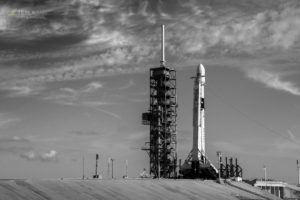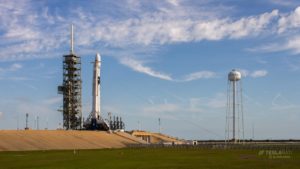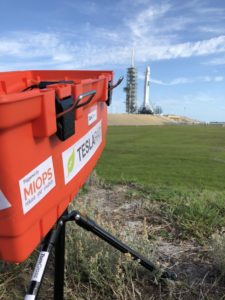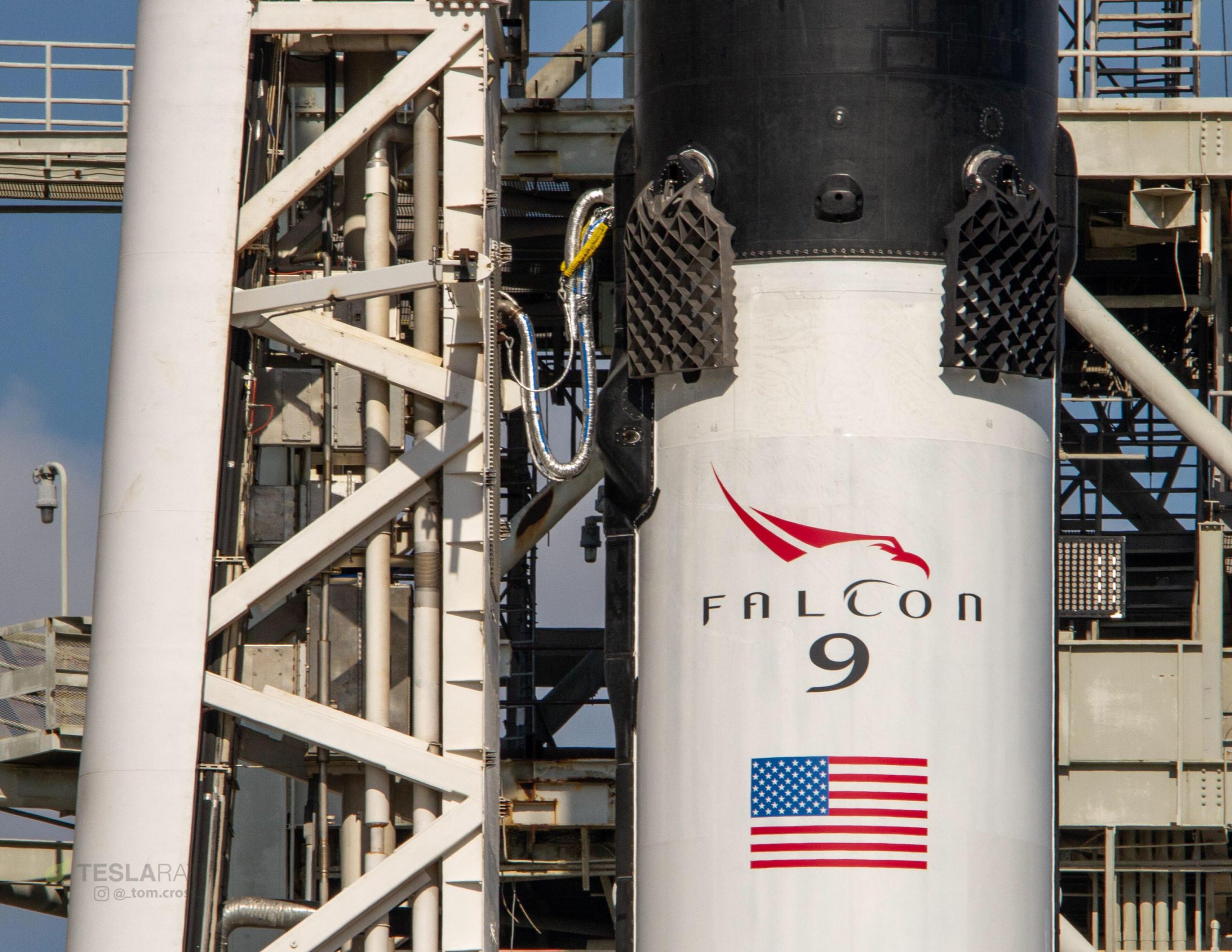
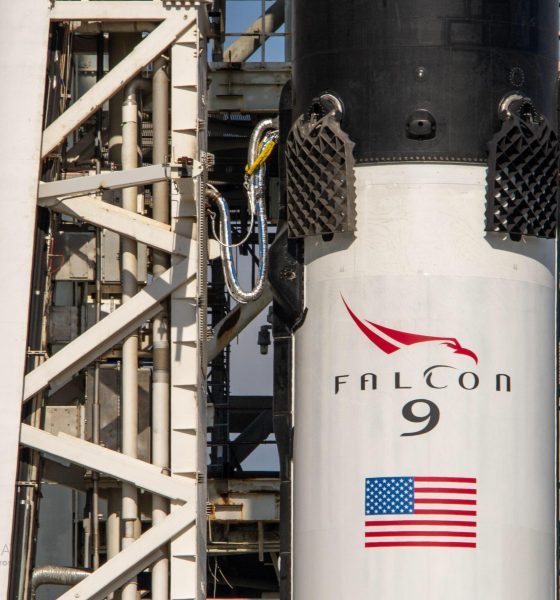
SpaceX
SpaceX expects 100s of Falcon 9 launches with fleet of 30 rockets, says Elon Musk
In a blissfully detailed prelaunch briefing, SpaceX CEO delved into the details of the audacious future ahead of the company’s new flagship rocket, Falcon 9 Block 5. While he made it clear that reliability, safety, and mission success are the primary focus of the vehicle, Musk did not shy away from emphasizing his immense confidence and optimism for Falcon 9 Block 5 – confidence that was validated
- F9 B1046 offers a glimpse of its Block 5 Merlins, octaweb, and heat shielding. (Tom Cross)
- SpaceX’s first Block 5 Falcon 9 prepares for its debut launch from Pad 39A, May 2018. (Tom Cross)
Most prominently, Falcon 9 has a long and productive future ahead of it, barring wildly unforeseen circumstances. Musk expressed SpaceX’s intent to build a fleet of 30 to 50 additional Block 5 boosters intended to support a minimum of three hundred Falcon 9 launches before the family of rockets is retired. The purpose-built reliable and reusable vehicle is further intended to be capable of as many as ten launches with “literally no action taken between flights,” a “ridiculously hard” technological achievement only possible through a decade and a half of “extreme effort.”
The CEO was extremely vocal about his pride in the company and the thousands of engineers, technicians, fabricators, and staff that made it all possible. If the “unequivocal intent” of the upgraded rocket’s design translates into operational reality over the next several months, Musk frankly stated that the vehicle will be the most reliable rocket ever built while simultaneously paving the way to aircraft-like reusability and a price floor as low as $5-6 million per launch.
https://twitter.com/_TomCross_/status/994607052466114561
Although SpaceX fully intends to recoup its considerable investments (likely approaching $2 billion for Falcon 9 and Heavy) and ensure that a reliable stream of income is available for BFR, Starlink, and other R&D projects, the cost of a flight-proven booster is now reportedly down to roughly $50 million per launch, nearly 20% lower than the listed base price of $62 million. Consequently, reusability is already saving customers large sums of money and ensuring that Falcon 9 remains the absolute cheapest vehicle for the performance, a trend Musk indicated would continue for the indefinite future as SpaceX decreases costs, expands and improves reusability, and recoups a satisfactory proportion of their investments.
Altogether, Musk’s in-depth discussion of Falcon 9 Block 5 paints the rocket as a near-complete redesign – if it flies successfully, Block 5 will essentially become the rocket SpaceX set out to build at the turn of the millennium. A fully-reusable Falcon 9 will realize that dream, and the CEO is “certain” that SpaceX can and will build it – BFR may be the new aspiration, but Falcon 9 will continue to be the company’s proving ground for years to come.
- Falcon 9 B1046 – the first Block 5 booster – is prepared for an inaugural launch on May 10. (Tom Cross)
- Launch photographer Tom Cross has set up an army of remote cameras to capture the historic moment. (Tom Cross)
The first Falcon 9 Block 5 was scheduled to launch May 10 from Kennedy Space Center’s Pad 39A but suffered a last-minute automated abort that pushed the mission over the bounds of its launch window. The launch has been tentatively recycled for May 11 and the new window opens at 4:14pm EST.
Follow us for live updates, behind-the-scenes sneak peeks, and a sea of beautiful photos from our East and West coast photographers.
Teslarati – Instagram – Twitter
Tom Cross – Twitter
Pauline Acalin – Twitter
Eric Ralph – Twitter

Elon Musk
Starlink passes 9 million active customers just weeks after hitting 8 million
The milestone highlights the accelerating growth of Starlink, which has now been adding over 20,000 new users per day.

SpaceX’s Starlink satellite internet service has continued its rapid global expansion, surpassing 9 million active customers just weeks after crossing the 8 million mark.
The milestone highlights the accelerating growth of Starlink, which has now been adding over 20,000 new users per day.
9 million customers
In a post on X, SpaceX stated that Starlink now serves over 9 million active users across 155 countries, territories, and markets. The company reached 8 million customers in early November, meaning it added roughly 1 million subscribers in under seven weeks, or about 21,275 new users on average per day.
“Starlink is connecting more than 9M active customers with high-speed internet across 155 countries, territories, and many other markets,” Starlink wrote in a post on its official X account. SpaceX President Gwynne Shotwell also celebrated the milestone on X. “A huge thank you to all of our customers and congrats to the Starlink team for such an incredible product,” she wrote.
That growth rate reflects both rising demand for broadband in underserved regions and Starlink’s expanding satellite constellation, which now includes more than 9,000 low-Earth-orbit satellites designed to deliver high-speed, low-latency internet worldwide.
Starlink’s momentum
Starlink’s momentum has been building up. SpaceX reported 4.6 million Starlink customers in December 2024, followed by 7 million by August 2025, and 8 million customers in November. Independent data also suggests Starlink usage is rising sharply, with Cloudflare reporting that global web traffic from Starlink users more than doubled in 2025, as noted in an Insider report.
Starlink’s momentum is increasingly tied to SpaceX’s broader financial outlook. Elon Musk has said the satellite network is “by far” the company’s largest revenue driver, and reports suggest SpaceX may be positioning itself for an initial public offering as soon as next year, with valuations estimated as high as $1.5 trillion. Musk has also suggested in the past that Starlink could have its own IPO in the future.
News
SpaceX shades airline for seeking contract with Amazon’s Starlink rival

SpaceX employees, including its CEO Elon Musk, shaded American Airlines on social media this past weekend due to the company’s reported talks with Amazon’s Starlink rival, Leo.
Starlink has been adopted by several airlines, including United Airlines, Qatar Airways, Hawaiian Airlines, WestJet, Air France, airBaltic, and others. It has gained notoriety as an extremely solid, dependable, and reliable option for airline travel, as traditional options frequently cause users to lose connection to the internet.
Many airlines have made the switch, while others continue to mull the options available to them. American Airlines is one of them.
A report from Bloomberg indicates the airline is thinking of going with a Starlink rival owned by Amazon, called Leo. It was previously referred to as Project Kuiper.
American CEO Robert Isom said (via Bloomberg):
“While there’s Starlink, there are other low-Earth-orbit satellite opportunities that we can look at. We’re making sure that American is going to have what our customers need.”
Isom also said American has been in touch with Amazon about installing Leo on its aircraft, but he would not reveal the status of any discussions with the company.
The report caught the attention of Michael Nicolls, the Vice President of Starlink Engineering at SpaceX, who said:
“Only fly on airlines with good connectivity… and only one source of good connectivity at the moment…”
CEO Elon Musk replied to Nicolls by stating that American Airlines risks losing “a lot of customers if their connectivity solution fails.”
American Airlines will lose a lot of customers if their connectivity solution fails
— Elon Musk (@elonmusk) December 14, 2025
There are over 8,000 Starlink satellites in orbit currently, offering internet coverage in over 150 countries and territories globally. SpaceX expands its array of satellites nearly every week with launches from California and Florida, aiming to offer internet access to everyone across the globe.
Currently, the company is focusing on expanding into new markets, such as Africa and Asia.
News
Tesla hints at Starlink integration with recent patent
“By employing polymer blends, some examples enable RF transmission from all the modules to satellites and other communication devices both inside and outside the vehicle.”

Tesla hinted at a potential Starlink internet terminal integration within its vehicles in a recent patent, which describes a vehicle roof assembly with integrated radio frequency (RF) transparency.
The patent, which is Pub. No U.S. 2025/0368267 describes a new vehicle roof that is made of RF-transparent polymer materials, allowing and “facilitating clear communication with external devices and satellites.”
Tesla believes that a new vehicle roof design, comprised of different materials than the standard metallic or glass elements used in cars today, would allow the company to integrate modern vehicular technologies, “particularly those requiring radio frequency transmission and reception.
Tesla has recently filed a US patent application on integrating RF transparent materials into the roof structure.
“facilitating clear communication with external devices and satellites”
Tesla fleet is getting @Starlink connectivity integration soon. LFG @Tesla @elonmusk… pic.twitter.com/bLa8YtPLd1
— Chansoo Byeon (@Chansoo) December 9, 2025
Instead of glass or metallic materials, Tesla says vehicles may benefit from high-strength polymer blends, such as Polycarbonate, Acrylonitrile Butadiene Styrene, or Acrylonitrile Styrene Acrylate.
These materials still provide ideal strength metrics for crashworthiness, stiffness for noise, vibration, and harshness control, and are compliant with head impact regulations.
They would also enable better performance with modern technologies, like internet terminals, which need an uninterrupted signal to satellites for maximum reception. Tesla writes in the patent:
“By employing polymer blends, some examples enable RF transmission from all the modules to satellites and other communication devices both inside and outside the vehicle.”

One of the challenges Tesla seems to be aware of with this type of roof design is the fact that it will still have to enable safety and keep that at the forefront of the design. As you can see in the illustration above, Tesla plans to use four layers to increase safety and rigidity, while also combating noise and vibration.
It notes in the patent that disclosed examples still meet the safety requirements outlined in the Federal Motor Vehicle Safety Standards (FMVSS).
Starlink integrated directly into Tesla vehicles would be a considerable advantage for owners. It would come with a handful of distinct advantages.
Initially, the inclusion of Starlink would completely eliminate cellular dead zones, something that is an issue, especially in rural areas. Starlink would provide connectivity in these remote regions and would ensure uninterrupted service during road trips and off-grid adventures.
It could also be a critical addition for Robotaxi, as it is crucial to have solid and reliable connectivity for remote monitoring and fleet management.
Starlink’s growing constellation, thanks to SpaceX’s routine and frequent launch schedule, will provide secure, stable, and reliable internet connectivity for Tesla vehicles.
Although many owners have already mounted Starlink Mini dishes under their glass roofs for a similar experience, it may be integrated directly into Teslas in the coming years, either as an upgrade or a standard feature.

